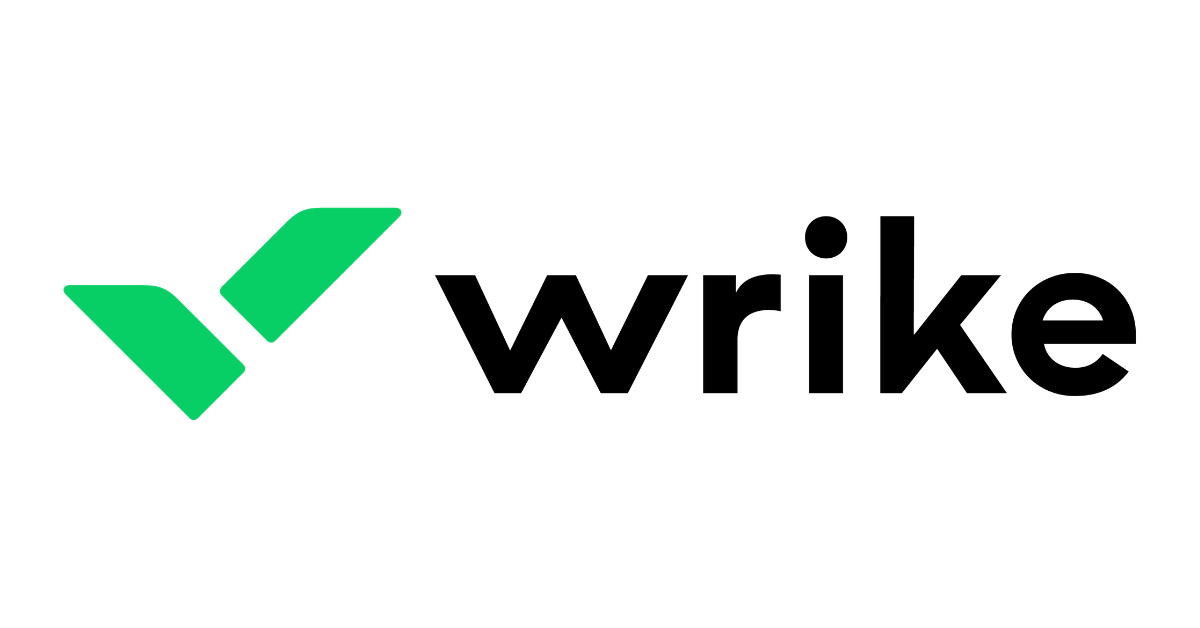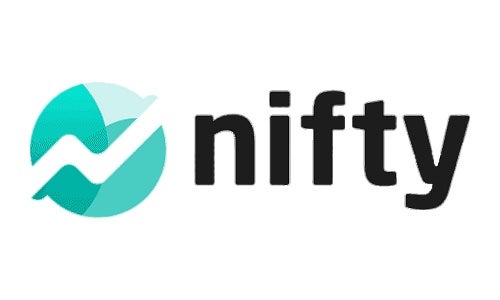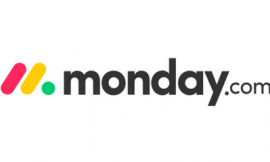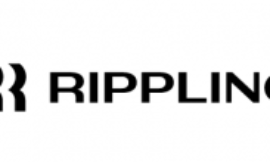
Healthcare project managers require software to maximize operational efficiency and better patient outcomes. There are a variety of project management software on the market, but choosing the right one can be challenging. The ideal software should be easy to navigate and have a variety of project management features, including tools for multiple project views, time tracking, document management and integration capabilities. In this article, we highlight the eight best healthcare project management software for 2023. We share each software’s pros, cons, pricing and key features. In addition, we share some tips on how to choose the best software for your organization.
Comparison
The following comparison table provides a quick overview of how the best health project management software compares in terms of core features.
| Built-in Gantt charts | Native time tracking | Integration capabilities | Document management | Starting price (per user per month) | |
|---|---|---|---|---|---|
| Wrike | |||||
| ClickUp | |||||
| Smartsheet | |||||
| Asana | |||||
| Trello | |||||
| Monday | |||||
| Nifty | |||||
| Airtable |
Wrike: Best for scalability

Wrike is a cloud-based project management software ideal for healthcare project management. It offers centralized collaboration and powerful reporting and analytics tools. It also offers robust security features, which are vital for the highly regulated healthcare industry. In addition, the software has document and file management features to help handle the large volume of data.
Pricing
- Free: For up to 5 users.
- Team: $9.80 per user per month.
- Business: $24.80 per user per month.
- Enterprise: Customized pricing.
- Pinnacle: Customized pricing.
Features
- Customizable workflows: Users can create custom workflows to tailor healthcare business process management according to their needs.
- Bug and issue tracking: This tool is most commonly used by software development teams, but they are useful for several other types of projects, including healthcare project management, quality assurance and customer service.
- Resource allocation: Wrike has in-built resource allocation tools to help healthcare project managers and admins monitor workload, check resource availability and assign tasks to optimize resource utilization.
Pros
- Powerful reporting and analytics tools.
- Multiple project views.
- Excellent proofing tools.
- Variety of customizable templates.
Cons
- The folder-based interface might be confusing for some users.
- Advanced security tools are only available in higher-priced plans.
Check our full review of Wrike for more information.
ClickUp: Best for customization

The versatile and highly customizable nature of ClickUp makes it ideal for different industries, including healthcare. The software offers seamless connectivity to healthcare tools and offers reporting features to empower healthcare project managers to make informed decisions. It also offers powerful security tools for keeping data safe.
Pricing
- Free: For up to 5 spaces
- Unlimited: $5 per user per month, billed annually, or $9 per user billed monthly.
- Business: $12 per user per month, billed annually, or $19 per user billed monthly.
- Business Plus: $19 per user per month, billed annually, or $29 per user billed monthly.
- Enterprise: Customized pricing.
Features
- ClickApps library: The extensive ClickApps library offers a variety of ready-to-use templates. They can be used for setting up automated sprints, managing milestones or other tasks.
- Time management: With ClickUp, users can schedule events, set due dates, monitor progress based on timelines, sync calendars and use other time management tools.
- Customization tools: One of the key features of ClickUp is its high level of customization. You can create tasks, lists, spaces and folders to create a hierarchical structure that meets your organization’s needs.
Pros
- Excellent built-in learning content.
- Flexibility of five plans.
- Impressive free plan.
- Real-time chat feature.
Cons
- Overwhelming interface.
- Steep learning curve.
- Limited automations.
Check our full review of ClickUp for more information.
Smartsheet: Best for spreadsheet-based workflows

Smartsheet’s ability to handle large amounts of data and offer robust data protection and compliance makes it an excellent software for healthcare project management. While the spreadsheet-styled interface is similar to Google Sheets and Microsoft Excel, it offers much more, including project templates, multiple views and collaboration and communication features.
Pricing
- Free: For up to one user and up to two editors.
- Pro: $7 per user per month, billed annually, or $9 per user billed monthly.
- Business: $25 per user per month, billed annually, or $32 per user billed monthly.
- Enterprise: Customized pricing.
Features
- Smartsheet add-ons: The Smartsheet Inc. ecosystem includes several other add-ons that you can integrate with Smartsheet, including tools for digital asset management, resource management and analytics.
- Project dependencies: Users get access to dynamic project scheduling tools such as Gantt charts, critical path analysis and task dependency reports.
Pros
- Works great for large amounts of data, such as complex budgeting.
- Includes robust data protection and compliance.
- Ideal for users familiar with spreadsheets to manage projects.
Cons
- Steep learning curve for users who are new to spreadsheets.
- No native time tracking or resource management.
Check our full review of Smartsheet for more information.
Asana: Best for complex projects

Asana’s organized user interface, variety of project views and variety of import options make it a powerful software for handling complex projects. Healthcare project management users will appreciate Asana’s ability to offer seamless collaboration between healthcare professionals and create workflows that are aligned with healthcare-specific processes. The software also integrates with several electronic health record systems (EHR).
Pricing
- Basic: Free for unlimited tasks, projects, messages, activity logs and file storage.
- Premium: $10.99 per user per month, billed annually, or $13.49 per user billed monthly.
- Business: $24.99 per user per month, billed annually, or $30.49 per user billed monthly.
- Enterprise: Customized pricing.
Features
- Variety of project views: Not only does Asana offer a variety of project views, but users can also instantly switch between lists, boards, calendars and other types of views.
- Organized layout: The user interface of Asana is clean and organized, making navigation quick and easy. The dashboard is customizable, allowing advanced users to set up quick access to advanced tools.
- Task management tools: Users can easily create subtasks, assign tasks to team members, set deadlines, track progress and more.
Pros
- Variety of import options.
- Feature-rich free version.
- Extensive integration capability.
Cons
- Users report issues with customer service.
- Mobile app is limited.
- Default notification settings can be overwhelming.
Check our full review of Asana for more information.
Trello: Best for beginners

Trello is an easy to use project management application with an intuitive user interface and a generous free plan. It can effectively be used as a healthcare project management tool with several useful features. For example, you could use Trello’s task management tools to manage medical documents, coordinate with healthcare professionals and track the progress of treatment protocols.
Pricing
- Free: Up to 10 boards per workspace.
- Standard: $5 per user per month, billed annually, or $6 per user billed monthly.
- Premium: $10 per user per month, billed annually, or $12.50 per user billed monthly.
- Enterprise: Between $7.38 and $17.50 per user per month, depending on the user count.
Features
- Templates gallery: Users can choose from a variety of templates, including pre-built and customizable templates for productivity, remote work and customer service.
- Automation: The automation tool in Trello is named Butler, which can be used to create rules and commands to automate actions in Trello without needing any coding.
- Power-ups: With Trello add-ons, users can expand the function of the software. There is a large library of Power-ups in Trello, including add-ons for document management, IT and marketing.
Pros
- Simple to use.
- Excellent functionality with free plan.
- Powerful automation features.
Cons
- Not ideal for complex projects.
- Heavily reliant on Kanban boards.
Check our full review of Trello for more information.
Monday work management: Best for versatility

One of the reasons monday work management is one of the leading project management solutions is its outstanding versatility. It can be effectively utilized in healthcare project management to streamline operations, enhance team collaboration and improve patient care outcomes. The customizable boards in monday work management allow users to configure the software to healthcare-specific workflows such as compliance management. In addition, the highly visual interface makes for smooth and intuitive navigation.
Pricing
- Free: For up to two seats.
- Basic: $8 per user per month, billed annually, or $10 per user billed monthly.
- Standard: $10 per user per month, billed annually, or $12 per user billed monthly.
- Pro: $16 per user per month, billed annually, or $20 per user billed monthly.
Features
- Budgeting: With the budgeting tools, you can set budget limits and stay on top of project expenses by monitoring spending. monday work management also allows you to set up notifications to alert you if the budget threshold is exceeded.
- Role assignments: With monday work management, you can assign specific roles within your team and easily track the progress of tasks.
- Dependencies: Dependencies are crucial in healthcare project management as it ensures all tasks are completed in proper order. This helps ensure compliance and patient safety.
Pros
- Highly customizable features.
- Intuitive and visual dashboard.
- Powerful automation tools.
Cons
- Users report slow customer service.
- Time tracking is only available in the highest-paid plan.
Check our full review of monday work OS for more information.
Nifty: Best for remote workers

Nifty is one of the top software for healthcare project management with its customizable workflows, easy to navigate interface and strong regulatory compliance tools. The user-friendly interface will help with adoption within your healthcare organization. In addition, the robust security features will ensure sensitive data is kept secure.
Pricing
- Free: For up to two active projects and 100MB of storage space.
- Starter: $5 per member per month, billed annually, or $9 per member billed monthly.
- Pro: $10 per member per month, billed annually, or $16 per member billed monthly.
- Business: $16 per member per month, billed annually, or $25 per member billed monthly.
- Enterprise: Customized pricing.
Features
- Time tracking: While the time tracking feature is not unique to Nifty, it does a better job with this tool compared to several other competitors. With Nifty, you get a more detailed breakdown of time tracking to help maximize resource utilization and improve team productivity.
- Project portfolios: This feature makes it easy for you to organize and manage multiple projects. While you have a centralized hub to view projects, you can easily dig deeper into any of the projects.
- Milestones: Nifty’s milestone feature includes a Gantt chart view to allow for a visual representation of project timelines and task dependencies.
Pros
- Excellent time-tracking tools.
- Extensive reporting and analytics feature.
- Handling of multiple projects with unique organization.
Cons
- Lack of native integrations as most of them require Zapier.
- Limited mobile app functionality.
- Limited customization options.
Check our full review of Nifty for more information.
Airtable: Best for smaller organizations

Airtable is one of the most easy to use solutions for healthcare project management. The simplicity of the software makes it ideal for smaller organizations. However, there is no lack of advanced features. You get integration capabilities to connect Airtable with your EHR or billing systems. You also get data security tools, team collaboration and custom workflows.
Pricing
- Free: For up to five creators or editors.
- Plus: $10 per seat per month, billed annually, $12 per seat billed monthly.
- Pro: $20 per seat per month, billed annually, $24 per seat billed monthly.
- Enterprise: Customized pricing.
Features
- Template library: Airtable has a massive library of templates. Users can also create templates and share them with other users or simply add it to the templates library for everyone to use.
- Interface designer: This is a tool for creating and sharing custom interfaces. Users can customize the dashboard according to their needs. Managers can customize the dashboard to get a higher-level view of their team’s progress.
Pros
- Quick and easy data import.
- Visually appealing and customizable user interface.
Cons
- Limited workflow automation.
- Gantt charts only available in Pro and Enterprise plans.
Check our full review of Airtable for more information.
Key features of project management software in healthcare
Integration Capabilities
Healthcare organizations often have other software, such as billing systems or EHR systems. It helps if the project management software is able to integrate with the existing tech stack to streamline operations and minimize disruptions.
Time tracking
With time tracking tools, project managers are able to optimize their resources. They can monitor actual time spent on tasks, use data for project planning and ensure their project remains within the scope of the budget.
Document management
The healthcare industry is subject to various regulation compliance, and an important component of this is data security. With document management tools, project managers can ensure data storage and sharing are secure. This feature also allows for efficient collaboration between healthcare professionals and administration staff.
Built-in Gantt charts
There are several benefits to using Gantt charts in healthcare project management. You get a highly visual representation of projects so you can ensure all tasks and subtasks are on track. This tool also ensures all team members are aligned on project goals, milestones and deliverables.
Methodology
To choose the best healthcare project management software, we analyzed several software. We looked at the features, user interface, pricing, pros, cons and integration capabilities of each software to compile the list of the best software. Our search also included an analysis of customer reviews and ratings for the software.
How do I choose the best healthcare project management software?
Healthcare project management software offers several benefits, but you can only realize their benefits if you choose the right software for your organization. As a starting point, you need to list your top priorities and establish what is the problem you are trying to solve with the software. This will help you narrow down your list of the best software. For example, if you need the most easy to use software, it might not offer all the advanced project management tools. So, you need to be clear about what you need from the software.
You will have to research each software to analyze whether it offers the features and usability that you need. This is also a good time to filter software that doesn’t fit your budget. Once you have the list down to a few vendors, it is best to use the free trial for a few days to analyze which software is a better fit for your needs.
Source of Article



